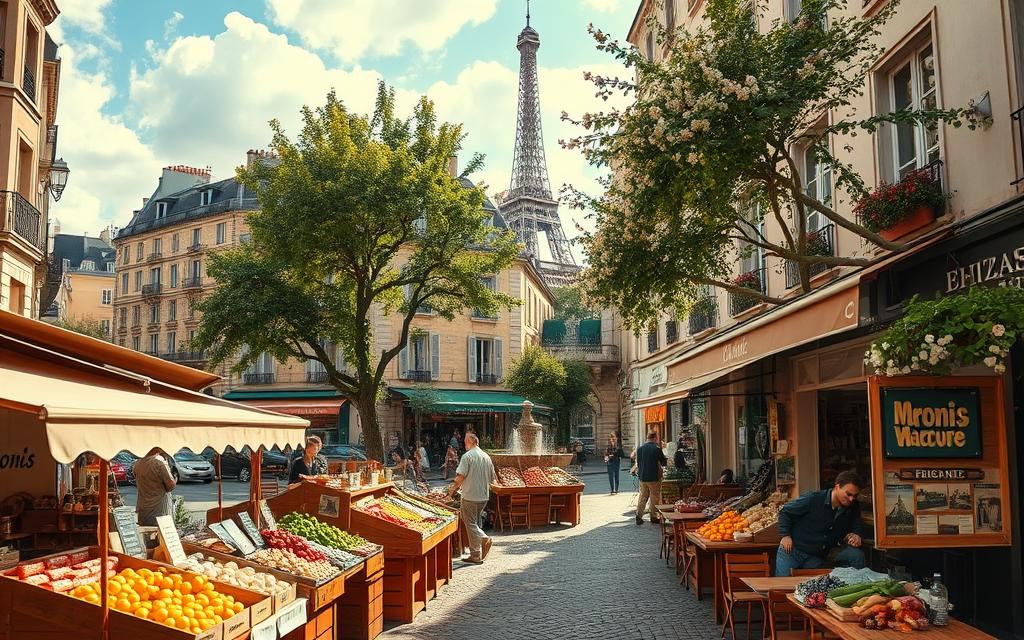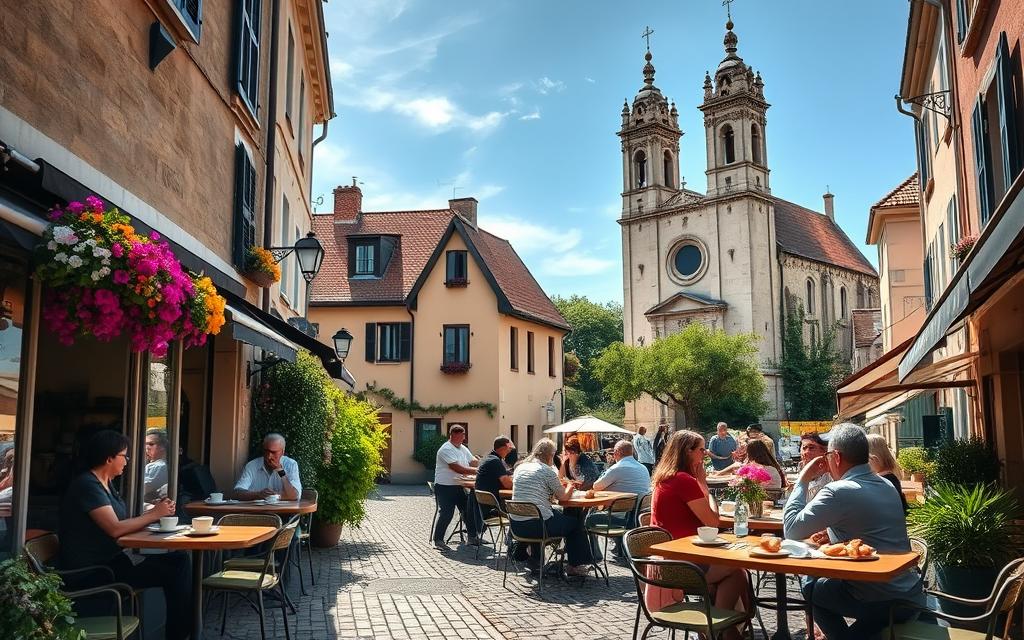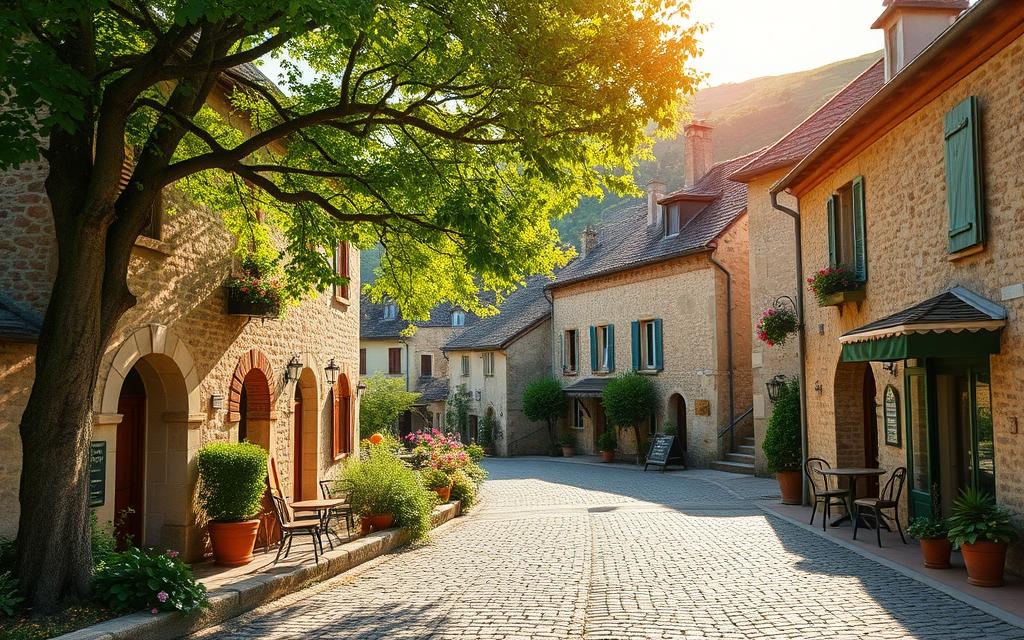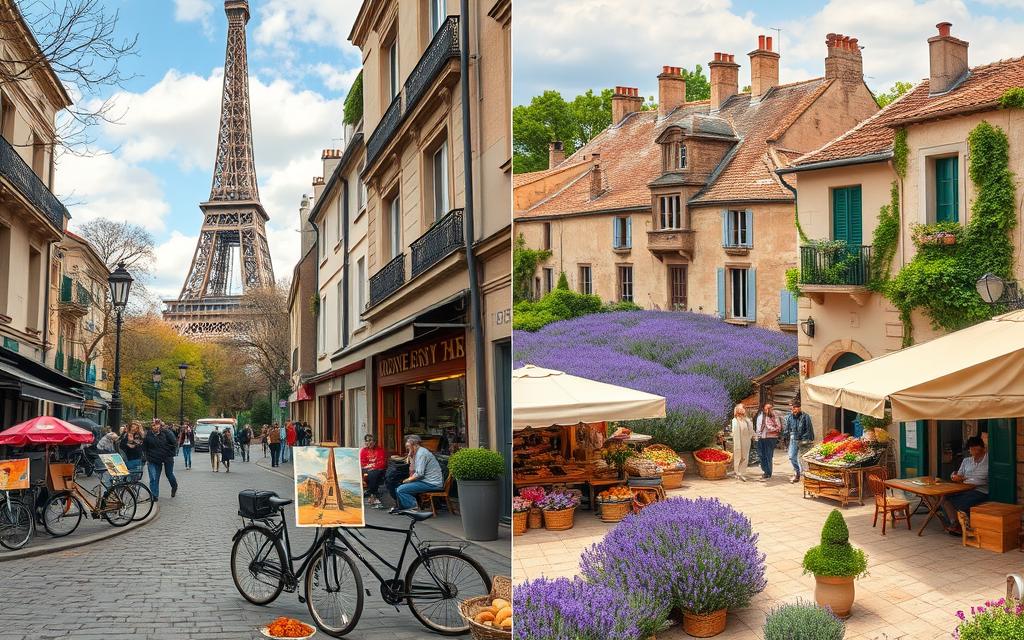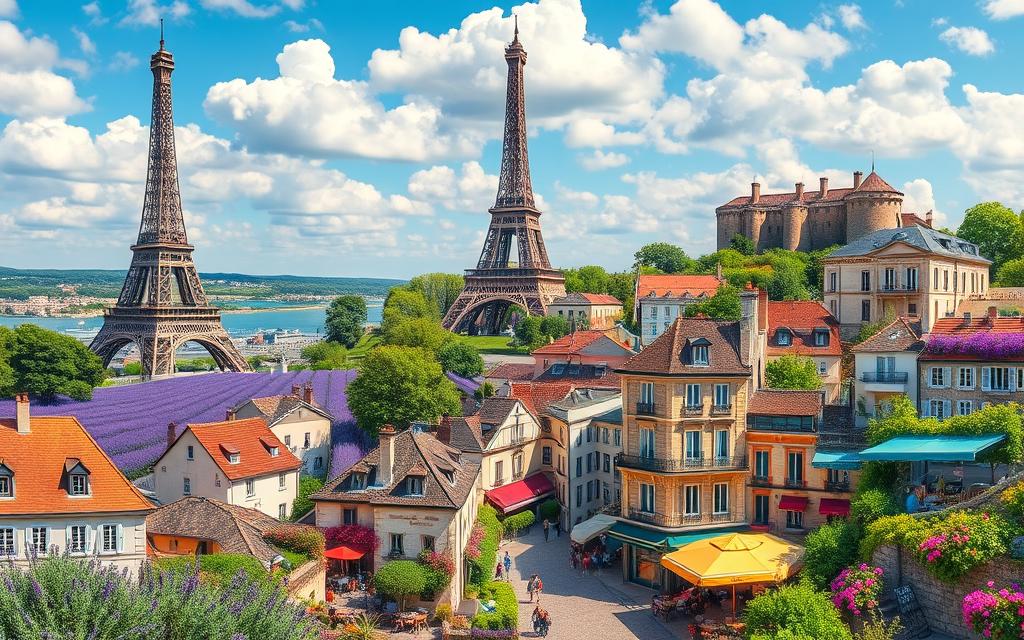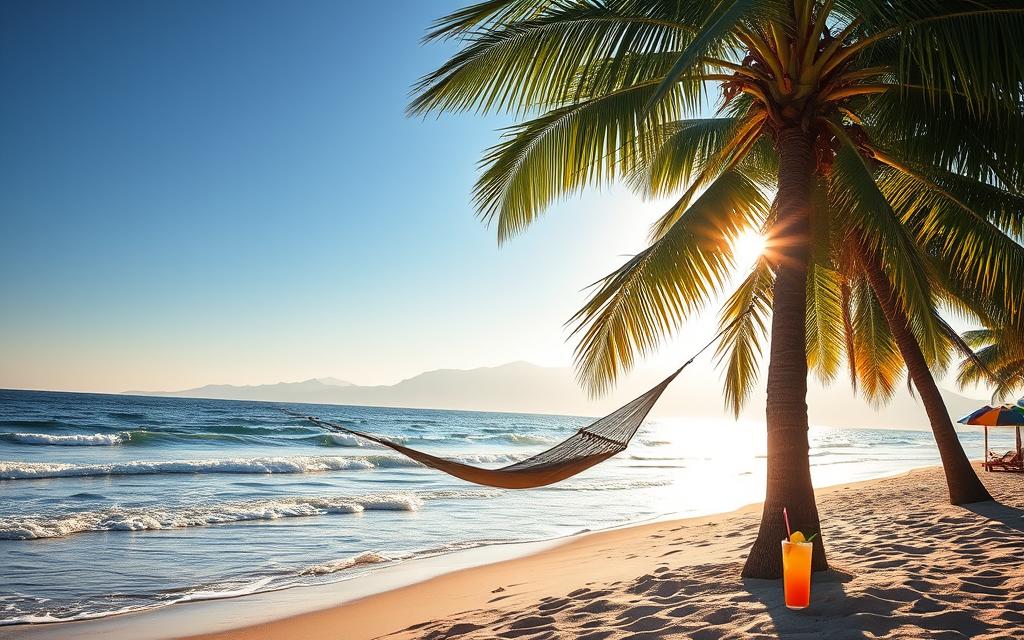If you’re planning to visit Malta, you may be wondering if it’s an expensive destination.
While prices can vary depending on your travel style and budget, Malta is generally considered an affordable destination compared to other European countries.
However, it’s still important to budget accordingly and be aware of the costs of accommodation, food, transportation, and activities.
Accommodation prices in Malta can range from budget-friendly hostels to luxury hotels, with prices varying by location and season.
In general, the busiest tourist season is from June to September, when prices may be higher. Food prices can also vary depending on where you eat, with street food and local markets offering more affordable options than upscale restaurants.
Transportation options include buses, taxis, and rental cars, with prices varying depending on your choice and location.
Understanding Malta
Malta is a small archipelago located in the Mediterranean Sea, south of Sicily and north of Libya.
The country consists of three main islands:
- Malta
- Gozo
- and Comino
Malta is the largest island in the archipelago and is home to the capital city, Valletta. The country has a rich history and culture that dates back thousands of years.
Malta is a popular tourist destination, known for its beautiful beaches, historic cities, and warm climate.
Valletta, the capital city, is a UNESCO World Heritage Site and is home to many historic buildings and landmarks, including St.
John’s Co-Cathedral and the Grand Master’s Palace. Mdina, also known as the Silent City, is a fortified city in Malta and is one of the oldest cities in the world.
Malta is a small country, with a population of around 500,000 people. The official language is Maltese, but English is widely spoken and understood. The country is a member of the European Union and uses the Euro as its currency.
In terms of size, Malta is one of the smallest countries in Europe, with a land area of just 316 square kilometers.
Despite its small size, the country has a lot to offer visitors, from its beautiful beaches and crystal-clear waters to its rich history and culture.
If you’re planning a trip to Malta, it’s worth exploring the different cities and towns on the islands. Rabat is a historic town located just outside of Mdina and is home to many ancient ruins and landmarks.
The Three Cities, a group of fortified cities located across the Grand Harbour from Valletta, are also worth a visit.
Whether you’re interested in exploring its ancient ruins or soaking up the sun on its beautiful beaches, there’s something for everyone in Malta.
Cost of Travel to Malta
When planning a trip to Malta, it’s important to consider the cost of travel.
This includes expenses such as flights, accommodations, transportation, food, and activities.
Flights to Malta
If you’re traveling from London, flights to Malta can cost anywhere from £50 to £200 depending on the time of year and how far in advance you book.
Flights from France and Sicily are also available, with prices ranging from €50 to €150. It’s important to note that prices may vary depending on the airline and the time of year.
Accommodations
When it comes to accommodations, there are options for every budget in Malta.
Hostels and budget hotels can be found for as little as €15 per night, while mid-range hotels and apartments can range from €50 to €100 per night.
Luxury hotels and villas can cost upwards of €200 per night.
Here are some popular and affordable hotels in Malta
- Hilton Malta
- 115 The Strand Hotel
- Maritim Antonine Hotel & Spa Malta
Transportation
Public transportation in Malta is affordable and efficient, with a single bus ride costing only €1.50. Taxis are also available, but can be more expensive.
If you plan on renting a car, prices can range from €20 to €50 per day depending on the type of vehicle and the rental company.
Food and Activities
Food and activities in Malta can also vary in price. Local restaurants and street vendors offer affordable options for meals, with prices ranging from €5 to €15 per dish.
Activities such as visiting historical sites and museums can cost anywhere from €5 to €20 per person.
Travel Insurance
It’s always a good idea to purchase travel insurance when traveling to Malta or any other destination.
Prices for travel insurance can vary depending on the coverage and the length of your trip, but generally range from €10 to €50 per person.
Accommodation Costs in Malta
When it comes to accommodation costs in Malta, there are a variety of options available to suit different budgets and preferences.
Whether you’re looking for a luxurious hotel, a cozy guesthouse, or a budget-friendly hostel, you’ll find plenty of choices in Malta.
Hotels in Malta can range from high-end resorts to affordable guesthouses. The average cost of a mid-range hotel or guesthouse in Malta is around €75-€110 per night.
However, prices can vary depending on the location and season. It’s always best to book in advance to get the best deals and avoid last-minute price hikes.
If you’re traveling on a budget, hostels are a great option. Hostels in Malta offer dormitory-style accommodation with shared facilities, making them an affordable option for solo travelers or groups. The average cost of a hostel bed in Malta is around €15-€30 per night.
For those who prefer more privacy and space, renting an apartment or villa can be a good option. Airbnb is a popular platform for finding apartments and villas in Malta.
The average cost of a one-bedroom apartment in Malta is around €60-€80 per night. However, prices can vary depending on the location and amenities.
Accommodation costs in Malta can be affordable if you plan ahead and choose the right option for your budget and preferences.
Consider your travel dates, location, and amenities to find the best deals and make the most of your stay in Malta.
Transportation Expenses in Malta
Getting around Malta is relatively easy and affordable. There are several transportation options available, including public transport, car rental, and taxi services.
Here’s what you need to know about transportation expenses in Malta:
Public Transport
Malta’s public transport system consists of buses and ferries. The buses are the most popular mode of transportation for locals and tourists alike.
A single bus ticket costs €1.50 and is valid for 2 hours. If you plan on using the bus frequently, it’s worth considering the Explore Card. This card costs €21 for 7 days and gives you unlimited travel on all buses and ferries.
The ferries are a great way to explore Malta’s neighboring islands, Comino and Gozo. A one-way ferry ticket to Gozo costs €4.65, while a return ticket costs €6.95. The ferry to Comino costs €13 for a return ticket.
Renting a Car
Renting a car in Malta is a good option if you want to explore the island at your own pace. The cost of car rental varies depending on the type of car and the rental period.
On average, you can expect to pay between €20-€50 per day for a basic car. However, keep in mind that driving in Malta can be challenging due to narrow roads and heavy traffic.
Taxis
Taxis in Malta are relatively expensive compared to other modes of transportation.
The starting fare is €10, and the cost per kilometer is €0.60. It’s worth considering using ride-hailing services like Bolt, which are more affordable and convenient.
Transportation expenses in Malta are reasonable and won’t break the bank. By choosing the right mode of transportation for your needs, you can explore the island without spending a fortune.
Cost of Eating and Drinking in Malta
When it comes to food and drink, Malta offers a wide range of options to suit different budgets. You can find everything from street food to high-end restaurants serving international cuisine.
Here’s a breakdown of the cost of eating and drinking in Malta:
Eating Out
Eating out in Malta can be affordable if you know where to look. You can find many restaurants that offer set menus for lunch and dinner at reasonable prices.
A typical meal at a mid-range restaurant can cost around €15-€25 per person, while a three-course meal at a high-end restaurant can set you back €50 or more per person.
If you’re on a budget, you can try some of the local street food options, such as pastizzi, ftira, and pizza sold in small shops and kiosks.
These items cost around €1-€3 each and are a great way to taste the local flavors without breaking the bank.
Wine and Beer
Malta has a rich wine-making tradition, and you can find many local wines in restaurants and bars.
A glass of wine can cost around €3-€5, while a bottle of local wine can cost around €10-€20.
If you prefer beer, you can find local and international brands in most bars and restaurants. A pint of beer can cost around €2-€4.
Seafood
Being an island nation, Malta has a rich seafood culture, and you can find many seafood dishes in restaurants and bars.
The cost of seafood dishes can vary depending on the type of fish and the restaurant. A typical seafood platter can cost around €25-€40 per person, while a simple fish dish can cost around €10-€20.
Cooking
If you prefer to cook your meals, you can find many supermarkets and grocery stores in Malta that offer a wide range of ingredients.
The cost of groceries can vary depending on the store and the brand. On average, you can expect to pay around €50-€100 per week for groceries for two people.
Food and Drink Prices
Here’s a summary of the average prices of food and drink items in Malta:
- Pizza: €5-€10
- Pasta: €8-€15
- Local Beer (pint): €2-€4
- Local Wine (glass): €3-€5
- Local Wine (bottle): €10-€20
- Seafood Platter: €25-€40 per person
- Mid-range Restaurant Meal: €15-€25 per person
- High-end Restaurant Meal: €50 or more per person
The cost of eating and drinking in Malta can vary depending on your preferences and budget.
However, with a little research and planning, you can find many affordable options that allow you to enjoy the local cuisine without breaking the bank.
Is Malta Part of the European Union?
Malta became a member state of the European Union on May 1, 2004, along with nine other countries.
As a member state, Malta enjoys the benefits of being part of the EU, such as free movement of goods, services, capital, and people within the EU, as well as access to EU funding and programs.
Malta also participates in the decision-making process of the EU by having a seat in the European Parliament and the Council of the European Union.
Additionally, Malta uses the euro as its official currency since 2008, which is another benefit of being part of the EU.
What is a good salary in Malta?
The average salary in Malta varies depending on the industry, level of education, and work experience.
According to the National Statistics Office, the average gross salary in Malta in 2020 was €24,000 per annum, which is approximately €2,000 per month.
However, this figure can vary significantly based on factors such as the industry, job role, and level of experience.
In general, a good salary in Malta would be considered to be around €30,000 to €40,000 per annum, which is approximately €2,500 to €3,300 per month.
This would allow for a comfortable standard of living in Malta, including covering the cost of rent, food, transportation, and other expenses.
However, it’s worth noting that the cost of living in Malta can be relatively high compared to other countries, particularly in terms of housing and utilities
Leisure and Activities Expenses
Malta is a destination for those who are looking for a mix of history, beaches, partying, and shopping.
The island offers a range of leisure and activity options that cater to all kinds of travelers. Here is a breakdown of the expenses you can expect to incur while enjoying these activities.
Explore
Exploring Malta’s history and culture is a must-do activity. The island is home to several UNESCO World Heritage Sites, including the ancient city of Mdina and the Megalithic Temples of Malta.
Entrance fees to these sites range from €5 to €12 per person. You can also opt for guided tours, which cost between €15 to €50 per person, depending on the length and type of tour.
Read Next
Destination
Malta’s small size makes it easy to get around. The island has an extensive bus network, and a single ticket costs €1.50.
If you plan on using public transport frequently, you can purchase an Explore Card, which costs €21 for a seven-day pass.
The card gives you unlimited travel on all buses, including night buses, and a 10% discount on ferry services to Gozo and Comino.
Activities
Water sports are a popular activity in Malta, with options such as jet skiing, parasailing, and paddleboarding available at most beaches.
Prices for these activities vary, but you can expect to pay around €50 for a 30-minute jet ski ride or €30 for a one-hour paddleboarding session.
If you’re interested in scuba diving, a single dive costs around €35 to €70, while a full-day diving excursion costs around €100.
Beaches
Malta is home to several stunning beaches, including Golden Bay and Mellieha Bay.
Most beaches are free to access, but you may need to pay for sun loungers and umbrellas, which cost around €10 to €15 per day. Some beaches also offer water sports activities, which are priced separately.
History
Visiting Malta’s historical sites is a great way to learn about the island’s rich past.
The entrance fee for the Malta National Museum of Archaeology is €12 per person, while the fee for the Malta War Museum is €10 per person.
If you’re interested in the Knights of St. John, you can visit the St. John’s Co-Cathedral for €10 per person.
Party
Malta is known for its vibrant nightlife, with Paceville being the hub of all the action. Entry fees to clubs and bars vary, but you can expect to pay between €5 to €15.
Drinks are priced similarly to other European destinations, with a beer costing around €3 to €5 and a cocktail costing around €8 to €12.
Shopping
Malta has several shopping centers and markets where you can find everything from high-end fashion to local souvenirs.
The Bay Street Shopping Complex in St. Julian’s is one of the most popular malls, while the Sunday Market in Marsaxlokk is a great place to find handmade crafts and local produce.
Overall, the cost of leisure and activities in Malta varies depending on your interests and budget. However, with a little planning, you can enjoy all that the island has to offer without breaking the bank.
Final Thoughts on Malta’s Expenses
Overall, Malta can be considered a relatively affordable destination for travelers, especially if you are visiting during the off-season.
While the country is small, it is packed with plenty of activities and attractions to keep you busy, from exploring ancient ruins to lounging on crystal-clear beaches.
One of the most significant expenses you will encounter in Malta is accommodation. However, there are plenty of budget-friendly options available, especially if you are willing to stay outside of the main tourist areas. Hostels, guesthouses, and Airbnb rentals are all excellent choices for budget-conscious travelers.
When it comes to food, you can find plenty of affordable options in Malta, especially if you are willing to eat like a local.
Maltese cuisine is a unique blend of Mediterranean and North African influences, with plenty of fresh seafood, hearty stews, and savory pastries on offer.
You can also find plenty of international cuisine options, from Italian to Indian, at reasonable prices.
Transportation in Malta is also relatively affordable, with a reliable bus system that can take you to most parts of the island. Taxis and rental cars are also available, but they can be more expensive.
Finally, it’s worth noting that Malta is a friendly and welcoming country, with plenty of opportunities to meet locals and fellow travelers alike.
Whether you are exploring the islands’ ancient history or soaking up the sun on a secluded beach, you are sure to have a memorable and affordable trip to this hidden gem in the Mediterranean.
Frequently Asked Questions
What are the best areas to stay in Malta?
Valletta, Sliema, and St. Julian’s are popular areas to stay in Malta. Valletta is the capital and has a historic charm, while Sliema and St. Julian’s are more modern and have a lively nightlife.
How much should I budget for food and drink in Malta?
The cost of food and drink in Malta can vary depending on where you go. On average, a meal at a mid-range restaurant can cost around €25-30 per person. If you’re on a budget, you can find cheaper options at local cafes and street food vendors.
Is Malta an affordable vacation destination?
Compared to other Western European destinations, Malta is generally affordable. However, prices can vary depending on the season and location. It’s possible to find budget-friendly accommodations and dining options in Malta.
How much is a Pint of beer in Malta
The price of a pint of beer in Malta can vary depending on the location and the type of establishment you’re in.
On average, a pint of local beer in a pub or bar in Malta can cost between €2.50 to €4.50. However, prices may be higher in tourist areas or in more upscale bars and restaurants.
Imported beers can also be more expensive than local beers. It’s worth noting that prices can fluctuate depending on the season and the demand, so it’s always a good idea to check the menu or ask the staff for the current prices.
Is Malta a safe place to visit?
Malta is considered a safe destination for tourists. However, like any place, it’s important to take precautions and be aware of your surroundings. Petty theft can occur in tourist areas, so it’s important to keep an eye on your belongings.
What is the cost of a meal in Malta?
The cost of a meal in Malta can vary depending on the type of restaurant and location. On average, a meal at a mid-range restaurant can cost around €25-30 per person. If you’re on a budget, you can find cheaper options at local cafes and street food vendors.
Is Malta more expensive than the UK?
The cost of living in Malta is generally lower than in the UK. However, prices can vary depending on the location and season. It’s important to research and compare prices before planning your trip.
Conclusion
Now that you have reviewed the cost breakdown and budget guide to Malta, you have a better understanding of how expensive the country can be.
While Malta may be more expensive than some Southern European destinations, it is still a relatively affordable place to visit.
When budgeting for your trip to Malta, keep in mind the cost of accommodation, transportation, food, and activities.
By planning ahead and seeking out deals, you can save money and enjoy your time in Malta without breaking the bank.
Some tips to save money during your trip to Malta include:
- Eating at local restaurants and markets instead of touristy spots
- Taking public transportation or walking instead of renting a car
- Staying in budget-friendly accommodations like hostels or apartments
- Visiting free or low-cost attractions like beaches and historical sites
Remember, the cost of living in Malta may continue to rise in the future, so it’s important to keep an eye on your budget and plan accordingly.
With a little bit of research and preparation, you can have a memorable and affordable trip to this beautiful country.
- France on a Budget: Affordable Gems and Costly Pitfalls to Avoid
- Ten Traveller Stories of France’s Best-Kept Secrets and Beware-Worthy Spots
- How to Experience France Like a Local: Beyond the Tourist Hotspots
- 11 Hidden French Places that even Locals Love and 5 to Avoid
- Best vs Worst French Places: A Cultural Guide for First-Time Visitors
- Master the Art of Travelling France: Insights on Must-Visit Spots

